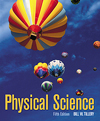In the previous chapter you learned how to describe motion in terms of distance,
time, velocity, and acceleration. In addition, you learned about different kinds
of motion, such as straight-line motion, the motion of falling objects, and
the compound motion of objects projected up from the surface of the earth. You
were also introduced, in general, to two concepts closely associated with motion:
(1) that objects have inertia, a tendency to resist a change in motion,
and (2) that forces are involved in a change of motion. The relationship between forces and a change of motion is obvious in many
everyday situations (Figure 3.1). When a car, bus, or plane starts moving, you
feel a force on your back. Likewise, you feel a force on the bottoms of your
feet when an elevator starts moving upward. On the other hand, you seem to be
forced toward the dashboard if a car stops quickly, and it feels as if the floor
pulls away from your feet when an elevator drops rapidly. These examples all
involve patterns between forces and motion, patterns that can be quantified,
conceptualized, and used to answer questions about why things move or stand
still. These patterns are the subject of this chapter. |



 2002 McGraw-Hill Higher Education
2002 McGraw-Hill Higher Education

 2002 McGraw-Hill Higher Education
2002 McGraw-Hill Higher Education